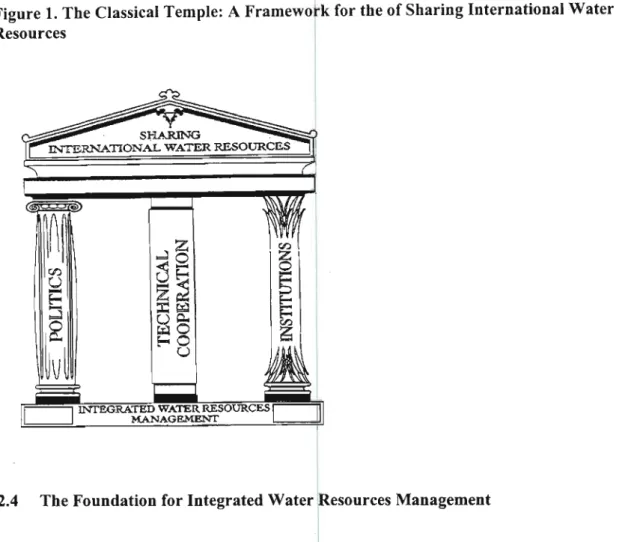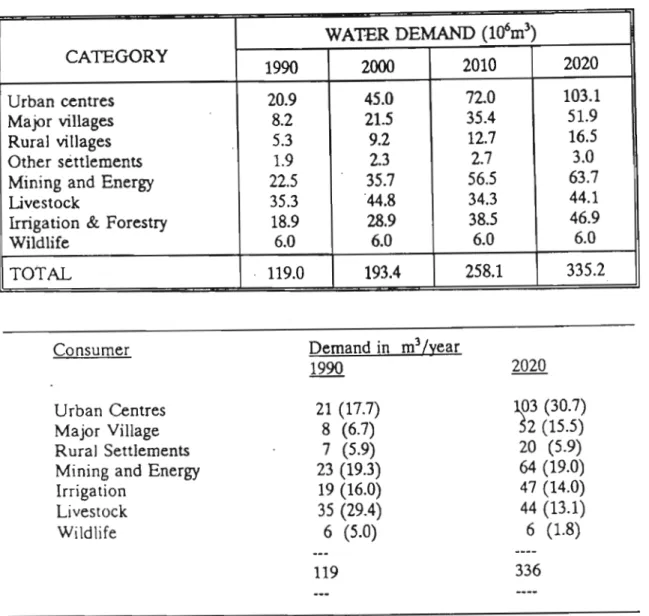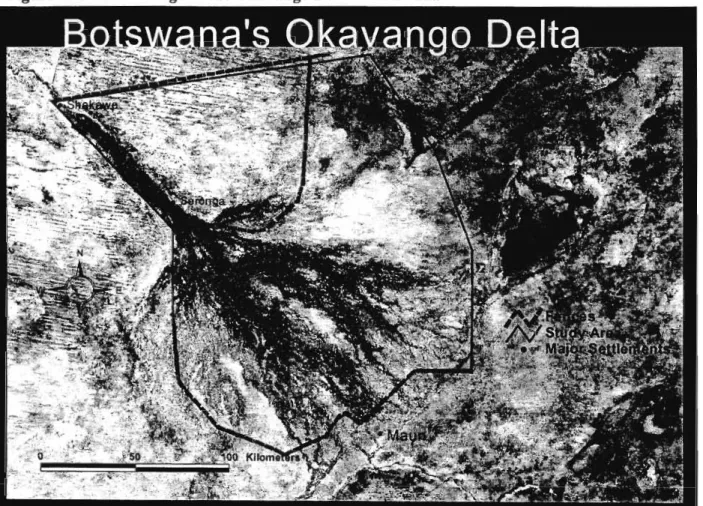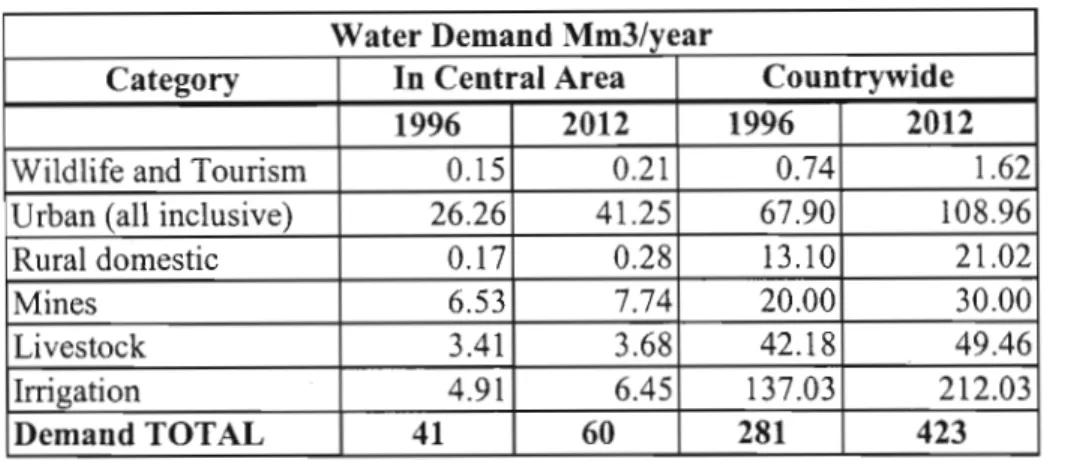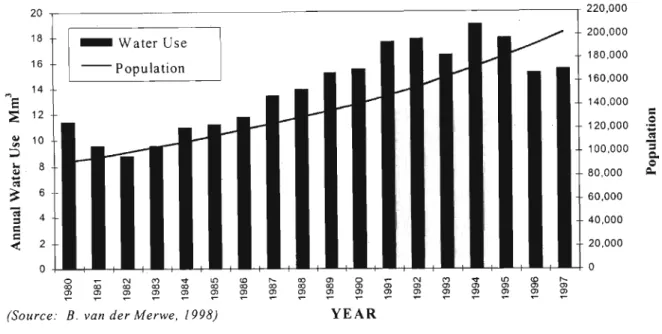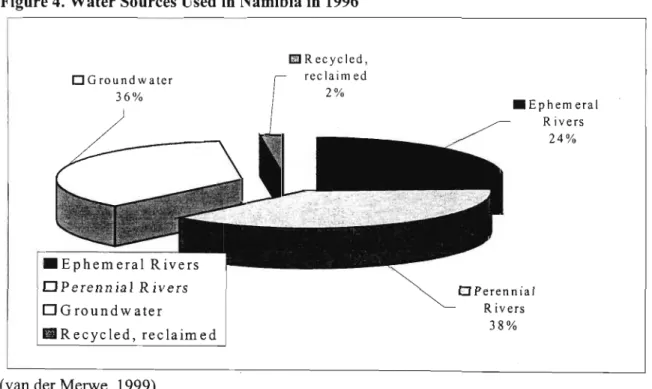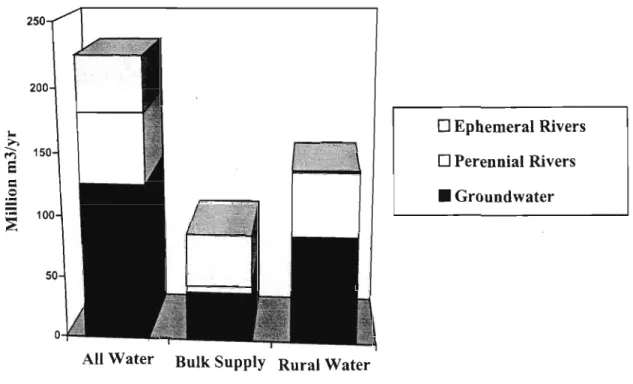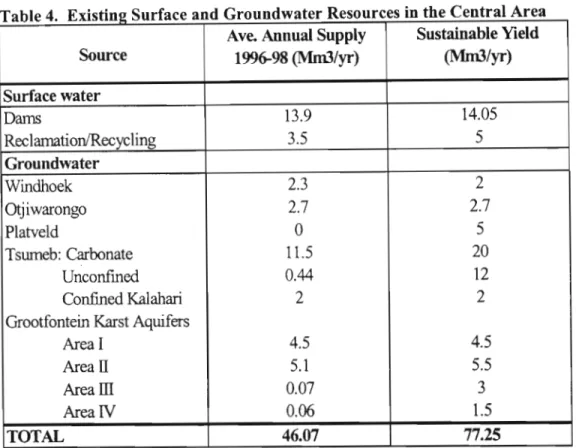General principles and critical issues in international river basin management A model for the management of the Okavango River Basin. The Classic Temple: A Framework for Sharing International Water Resources Satellite Image of the Okavango Delta.
ACKNOWLEDGEMENTS
INTRODUCTION
The Study Area and Background
Okavango River Basin
- Statement of the Problem
- Aim of the Study
- Methodology of the Study
- Data Collection Methods and Field Research
- The Political Pillar: Creating an Enabling Environment
- The Demand for Water
- THE OKAVANGO RIVER BASIN
- Institutional Context
- Threats to the ORB (i) Environmental Threats
- The Okavango Delta
- RIPARIAN COUNTRIES DEVELOPMENT PLANS FOR THE OKAVANGO
Agriculture in the poorly watered upper reaches of the Okavango River - the Angolan Highlands - (Benguala Plateau) mainly relies on rainwater practices, soil and water conservation, while agriculture in the lower and drier plains of the Okavango Delta in Botswana, for example, can be targeted into irrigation as the most suitable solution for ensuring food production, maintaining a strong rural economy and supporting agro-industry and exports (McCaffery, 1993). First of all, it is necessary to create transparency in the management of the river system.
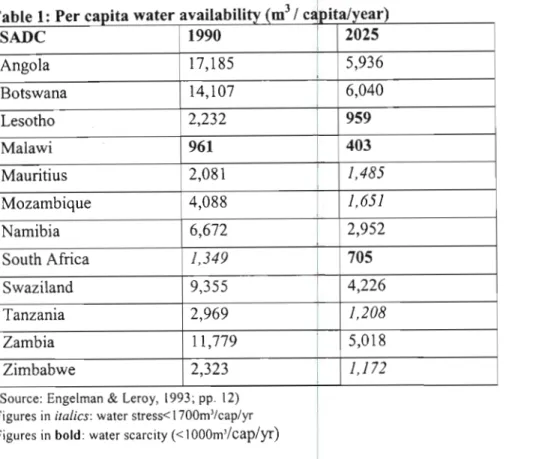
KARSTVELD
CENTRAL SUPPLY AREA
Botswana: History of Water Extraction from the Okavango Delta
The social and economic climate of the country will be reviewed in detail in the case study section on Botswana in chapter five. They creep across the Kalahari and flow to the edges of the Makgadikadi pans (see Map Five, page 84). The possible shortfall in 2002 would be less than this due to the additional supplies listed above and due to the closure of the Tsumeb mines.
For about ninety million years it lay hidden in the vast plain of Kalahari sandstone, without any striking features or changes in topography (Ross, 1987). Although Orapa lies 280 kilometers from the delta, only a small part of the Okavango's water resources reach it via the Boteti River (Walker, 1991). The flow of one of the Okavango rivers, the Boro, has been increased by deepening part of its bed and blocking some of its outlets with earthen dams.
For several years the Mopipi reservoir was full, but the drought years of the 1980s reduced the floods to such an extent that the water from the Boteti never reached Mopipi reservoir (Walker, 1991).
The Republic of Botswana
- Security threats to Namibia's decision to divert water from the Okavango River
They share one of the harshest deserts in the region as well as some of the largest rivers such as the Okavango and Chobe rivers. Physical limitations, related to the geographical position of the rivers entering in relation to the country (passing directly as opposed to passing along the periphery as the two ends); Ideological constraints related to various alternative uses of river water (rivers function as valuable habitat versus source of water for social production purposes).
Political constraints complicate the use of the Zambesi water, and ideological constraints limit the use potential of the Okavango water (Ohlsson, 1995). In the aftermath of the agreement, several other conflicts between the provinces were resolved (Far Eastern Economic Review, 1991). The Namibian government has since denied that it would go ahead with the project to pump water from the Okavango River without the approval and cooperation of the Botswana government.
The Government of Botswana is well aware that any interference with the flow and volume of the Okavango River will have a detrimental effect on the country's economic prosperity.
M~VANGO
Emergency Status for the ENWC Ends
The Okavango River Pipeline was first designed in the 1970s, before much research had been done on groundwater reserves or other water sources. The list of potential sources in the water plan does not address the relative costs or environmental impacts of the different sources, but does indicate that there are other options that could meet demand for some time (ibid.). The Okavango River Basin has unique qualities of geomorphology, hydrology and biodiversity, qualities that remain relatively pristine with little observable human impact on the hydrology and aquatic ecology of the basin.
The importance of the basin has been highlighted by international interest in the hydroecological condition of the delta and the biodiversity it supports. Furthermore, due to its remoteness and ongoing political instability, the Angolan part of the basin remains one of the least developed regions in the savanna belt that runs through Angola, the Republic of Congo and Zambia. If left unchecked, direct and indirect threats to this international water body will result in disruption of hydrological and ecological integrity causing the global community to lose significant conservation benefits (including direct and indirect use values, as well as of existence and option).
This was avoided after a period of rainfall which restored reservoir levels in the central part of the country.
RIVER BASIN ORGANISATIONS
Ensuring the sustainable management of the Okavango River Basin will require more than simply signing a treaty between basin governments that prescribes how to share water and other resources. Effective management of the river basin will therefore require that all who use it share the responsibility of managing the Okavango (Roodt, 1998). Promising signs for a sustainable future for the river basin have also emerged with the establishment of the Okavango Liaison Group.
Every River' will be a coordinated set of activities over an 18-month period aimed at promoting sustainable co-management of the Okavango River Basin. The activity "Every River Has Its People: Promoting Co-Management of the Okavango River Basin" has three elements: a) strengthening the capacity building of Okavango River Basin stakeholders; b) promoting a participatory protocol; and c) the Okavango clock (Rothert, 1998). Educate riparian communities and other stakeholders on issues relevant to the management of the Okavango River through an educational book and video;.
Assessing the feasibility of "Okavango watch", a program to involve schools and the private sector in monitoring the health of the Okavango River and Delta (Rothert, Ross, and Shupema, pers. comm.).
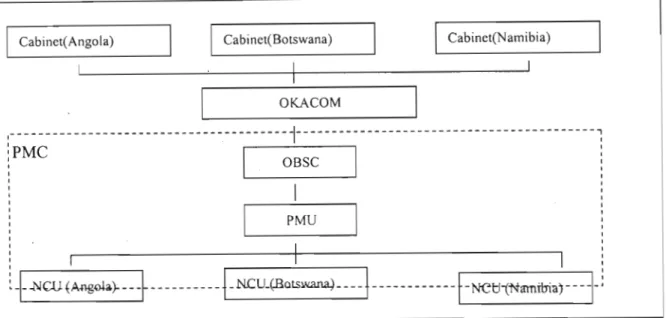
Artificial Recharge of the Windhoek Aquifer and Water "Banking"
At times, the core area has been forced to draw water from aquifers at a rate that exceeds their long-term sustainable yield. WTC (1997) compiled DWA proven or estimated emergency and long-term sustainable withdrawal rates for the core area aquifers. Studies have shown that if the core area aquifers were pumped with existing wells in an emergency, an additional 13.4 Mm3/year would be available for up to two years during drought conditions.
Information from past pumping practices and recent studies suggest that the three abandoned mines in the Grootfontein-Tsumeb area, namely the Berg Aukas, Abenab and Tsumeb mines, represent a significant potential contribution to the Central Zone's water supply. Thus, based on this modeling, demand management, artificial recharge, and groundwater resources can safely meet the water needs of the Central Area's projected growth in demand for many years to come, as well as in an emergency situation. v) Comparison of the Okavango pipeline and alternatives. It is clear that the Okavango River pipeline project is not the only option to meet the urgent water supply needs of the Central Zone.
Existing aquifers, the development of abandoned mines, water demand management and the simultaneous use of the Windhoek aquifer appear to provide more than sufficient resources to meet demand in the central area for at least two years in an emergency comply.
Beyond the Next Crisis: Long-term Water Supply and Planning Issues
A major limitation of the law, and one that puts it in conflict with Namibia's Constitution, is that it does not determine the sustainable use of water resources in terms of social, economic or environmental sustainability. The Water Supply and Sanitation Sector Policy (WASP) introduced wide-ranging changes in water management in Namibia, including the establishment of the Directorate of Rural Water Supply, the Namibia Water Corporation (Namwater), and the Water Supply and Sanitation Coordination. Committee. The deficiencies found in the Water Act, WASP and other laws and policies could be rectified in a White Paper on Water Sector Policy which would become the new water law. hi) Demand Management and System Efficiency Strategies.
The population of Namibia doubles every 23 years, and as the country continues to develop, a larger percentage of the population will expect to have water constantly available for their various needs. Effective demand management will be the only way to ensure that water remains available for at least basic needs. The challenge now lies with the government to continue to expand the demand management program without the incentive provided by a nationwide drought (Ashley, et al. 1998).
Windhoek's supply comes from multiple sources such as local wells, a dam close to the city, a water reclamation plant, reuse of treated effluent, three large dams at a distance from the city and connection to groundwater about 300 km north of the city.
Emerging Technologies
System-wide, opportunities exist to increase the guaranteed safe yield through operational innovations. For example, by connecting the dams to Windhoek's groundwater through artificial recharge, as discussed above, the city could make significant gains in its safe output. Furthermore, financing or subsidy strategies could exist to sufficiently reduce the costs of sustainable approaches to a competitive level.
For example, multilateral donors such as the World Bank have expressed goals to support sustainable water and energy projects.
Solutions and Recommendations
This is relevant to most of the states in the Okavango Basin, albeit to varying degrees. It is also probably one of the most important issues currently emerging from the water sector in Southern Africa. Background paper on the availability and efficiency of the Rural Water Supply Infrastructure, Department of Water.
Report on the scoping meeting in relation to the environmental impact assessment of the proposed water carrier from the Okavango River to central Namibia. Shell Field Guide to the Trees of the Okavango Delta, Shell Publishers, Johannesburg, South Africa. Primary productivity of African wetlands, with special reference to the Okavango Delta, in Proceedings of the Symposium on the Okavango Delta and its Future Uses.
Feasibility study on the Okavango River to Grootfontein Link of the Eastern National Aquifer.
OKACOM
